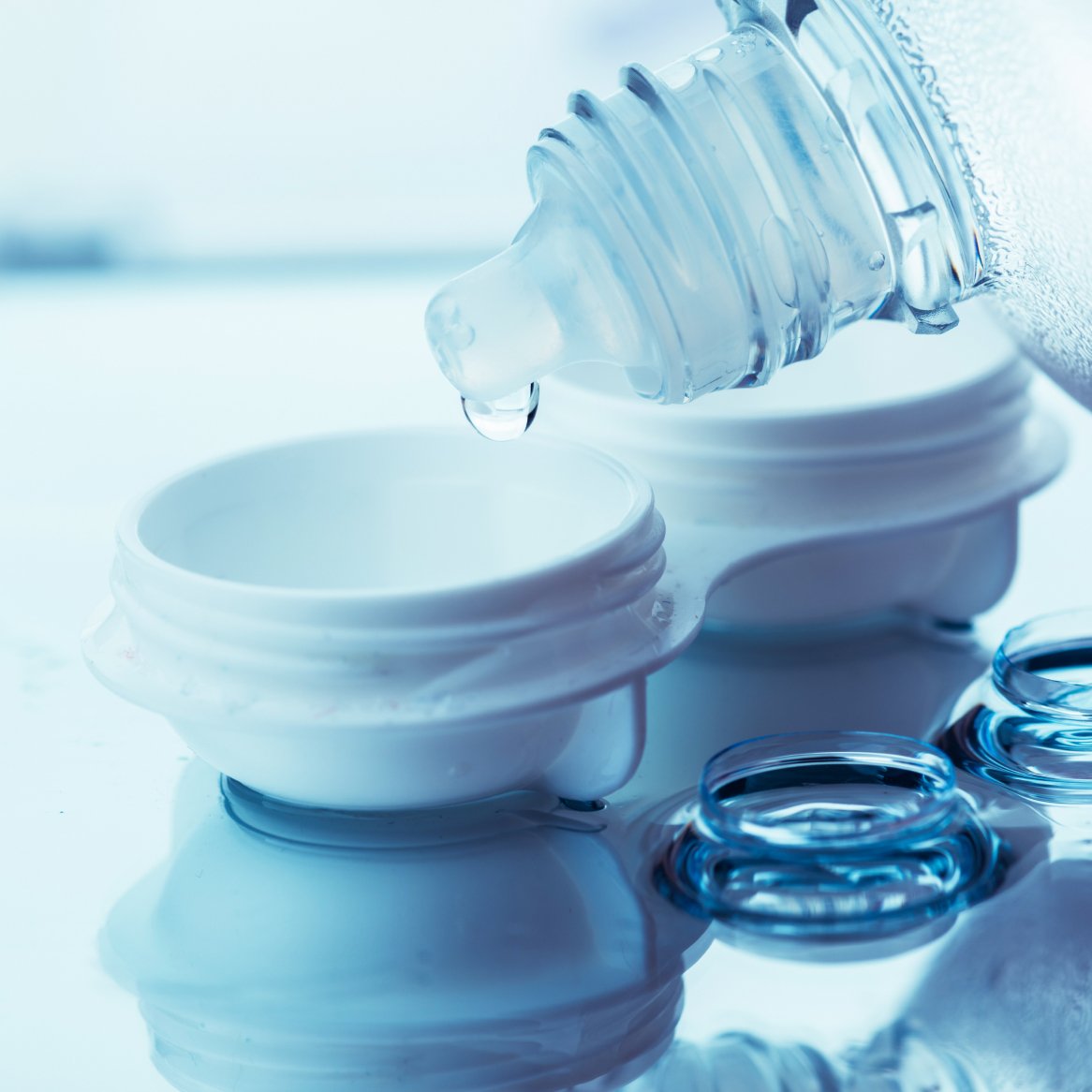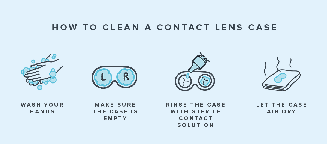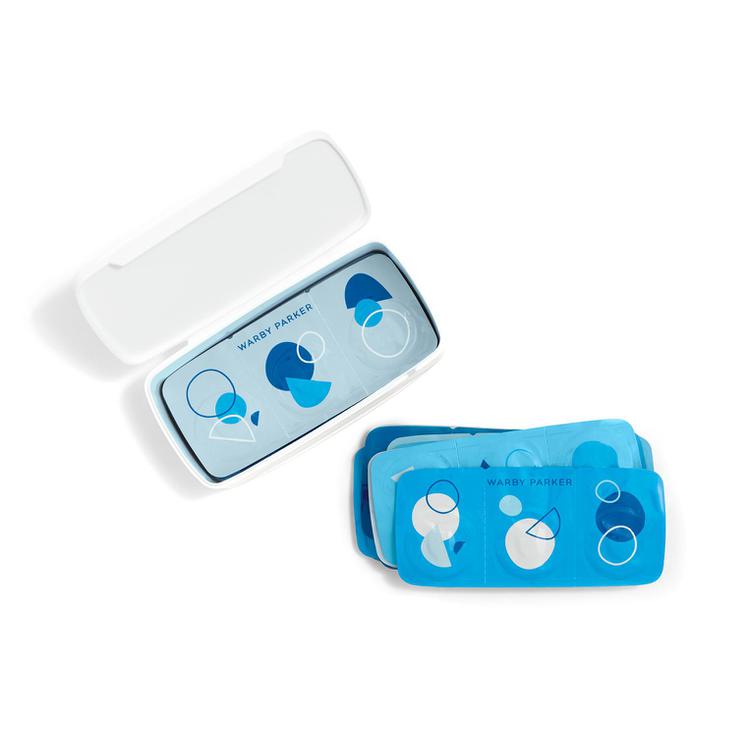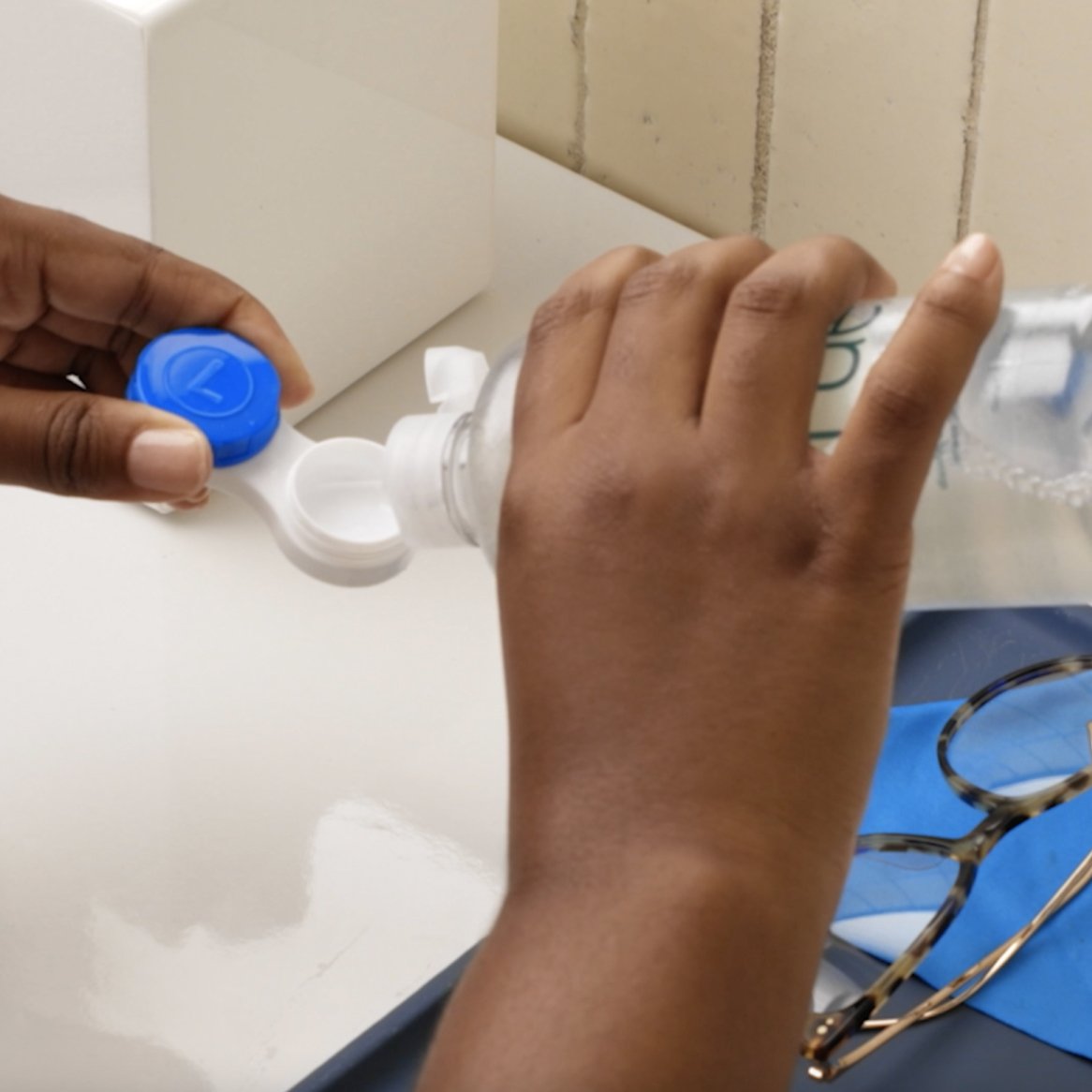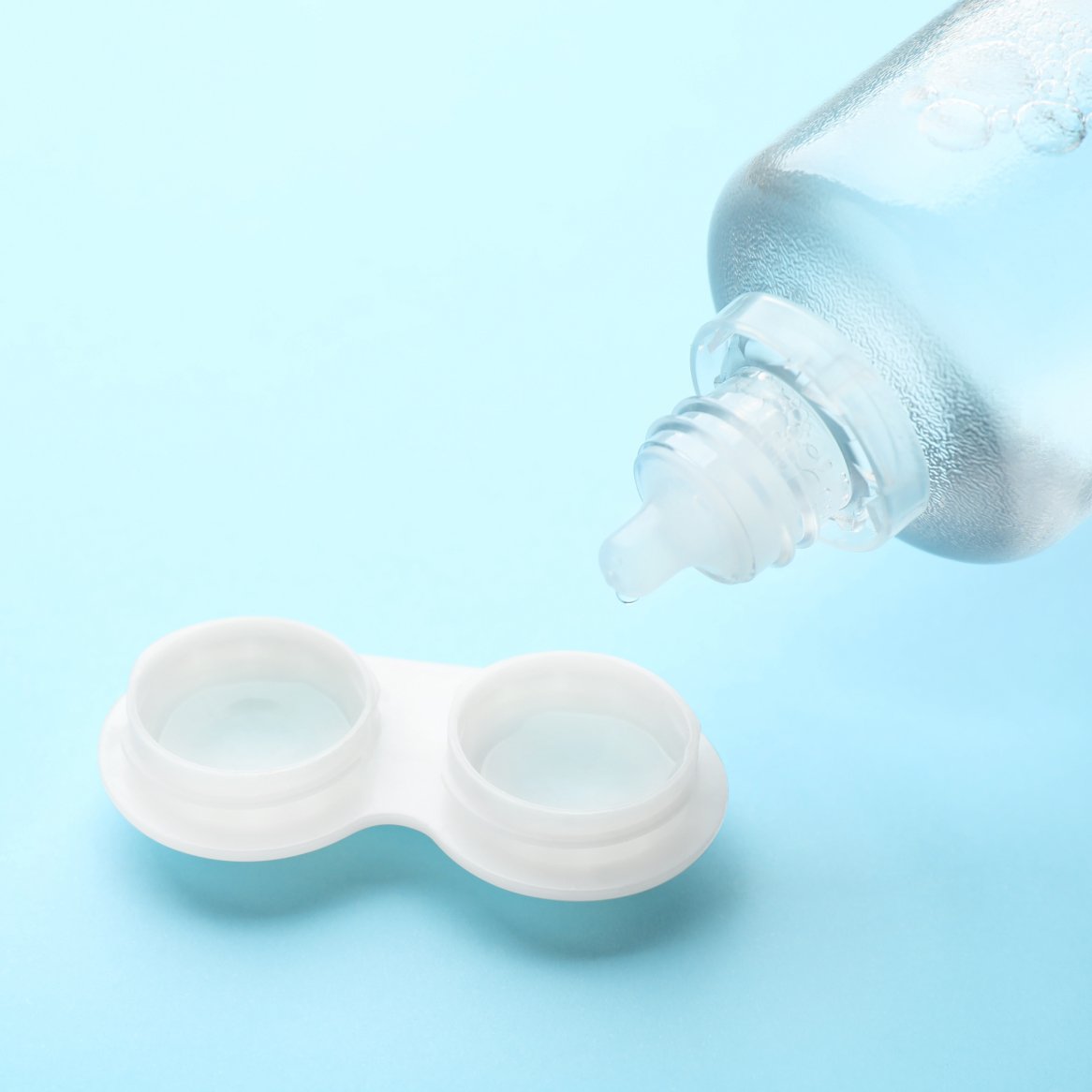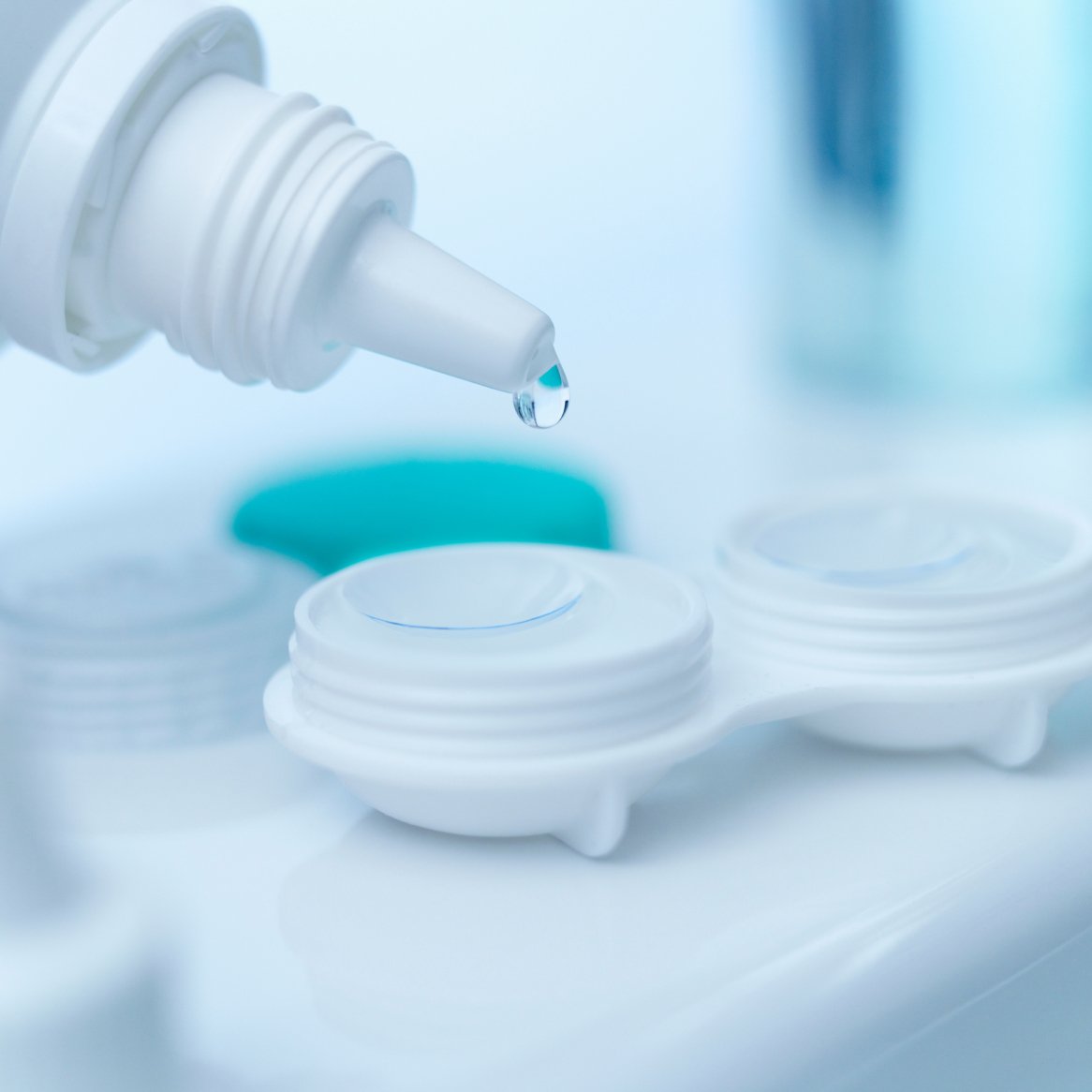If you wear contacts, then hopefully you already know how important it is to keep your lenses clean. Regular maintenance is an essential part of keeping your eyes healthy and your contacts bacteria-free.
Just like your lenses, the case you store them in may collect harmful microbes over time. So every day after putting your contacts in your eyes, clean your contact lens case, too. Experts recommend rinsing your case with a sterile contact solution and letting it air-dry. This approach can help keep your lenses safe and your vision protected.
We know what you might be thinking: Cleaning your contacts and their case after every use sounds a bit tedious. But the fact is that it’s an important part of keeping your eyes healthy. Let’s take a closer look at the steps you should take to keep your contacts case clean.
4 Simple Steps for Cleaning Your Contact Lens Case
In general, cleaning a contact lens case requires just a few straightforward steps. But there may be slight differences depending on the type of cleaning or multipurpose solution you use. Be sure to always follow the instructions on all products and any additional directions you may have received from your eye doctor.
Before you get started, make sure you have all the materials you need on hand. Gather your contact solution, hand soap, and a clean, lint-free towel or washcloth, and then you’ll be ready to go.
1. Wash Your Hands
The first step before anything else is to thoroughly wash your hands. Otherwise, the germs and oil from your fingers could easily transfer to your contacts case, even as you’re cleaning it. Using soap (antibacterial soap is best) and a clean, lint-free towel to wash and dry your hands can help keep this to a minimum.
2. Make Sure the Case Is Empty
Before you begin cleaning your contact lens case, make sure it’s completely empty. Confirm your lenses are removed, as well as any solution that may be left over. Used contact solution may contain germs and should never be used as part of the cleaning process.
3. Rinse the Contact Lens Case
Next, it’s time to clean the contact lens case. Using a multipurpose or contact cleaning solution, rinse the case (including the caps!) according to the solution directions. Then, dump out the solution.
It’s important to only use fresh unexpired contact or cleaning solution to rinse your case. Non-sterile fluids can leave behind bacteria or chemicals that could be harmful to your eyes or contacts.
You should also never use water, soap, or other non-approved cleaning products to clean your case.
4. Let the Case Dry
Once you’ve rinsed out your contacts case, it’s time to let it dry. Rather than wiping your clean contact lens case with a towel, let it air dry.
With the caps of your case still removed, lay down a clean, lint-free towel or washcloth and place your case and the caps face down on top of it. This process drags any remaining solution down to the towel and protects the case from any airborne particles that could otherwise drift inside.
If you use a hydrogen peroxide-based solution, be sure to follow the instructions for draining the case carefully. You may need to store the case inverted and not on its side.
Once the case and caps are completely dry, seal the case with the caps and store it in a clean, dry area. Repeat this process after every use.
When Should You Replace Your Contacts Case?
Replacing your contacts case every one to three months is a good rule of thumb. The recommended frequency of replacement varies with the type of contacts, solution, and case you use. If it ever becomes cracked or damaged, though, replace it immediately.
Cleaning your contact lens case loses its effectiveness after a while. That’s why experts recommend regularly replacing it. Regular replacements can help reduce the risk of eye infections and other problems.
And for your convenience, many contact lens solutions come with a brand new case, gently reminding you to replace your old case.
Alternatives to Reusable Contact Lenses
If reusable contacts and cleaning aren’t for you, there are alternatives. Let’s take a look at some of the other optical options available.
Daily Disposable Lenses
With a lower risk of infection, daily contacts provide a way to improve your eyesight without the extra steps of cleaning and storage. Disposable lenses are packaged in a sterilized blister pack and intended to be thrown out at the end of the day—no muss, no fuss.
For contact lens wearers with seasonal allergies, disposable lenses may provide other benefits as well. Tossing out contacts after wearing them all day also means tossing out any pollen and other eye irritants that may have accumulated on the lenses.
Glasses
Whether you choose to wear glasses or contacts all boils down to personal preference. Some people may choose glasses if they prefer not to deal with daily contact lens care.
Laser Surgeries
Another option that has grown in popularity in recent years is laser eye surgery. This procedure might cause some initial discomfort. But the long-term benefits could be preferable to the burden of cleaning your contact lenses and case every single day.
A Clean Contact Lens Case Is a Happy Contact Lens Case
That is, of course, if contact lens cases can feel happiness. (We think they can.) Jokes aside, knowing how to clean your contact lens case properly is vital to your eye health. So curb the urge to skip this part of your contact lens care routine and protect those peepers!

